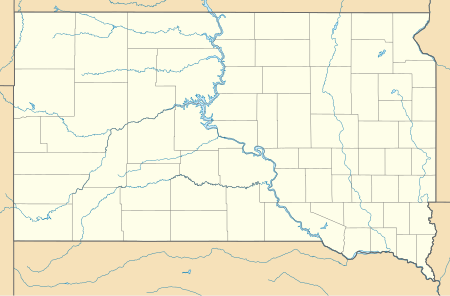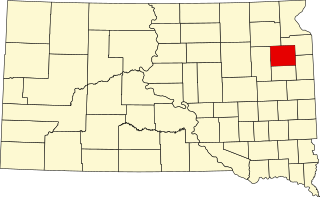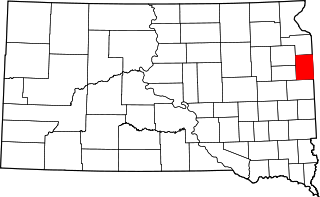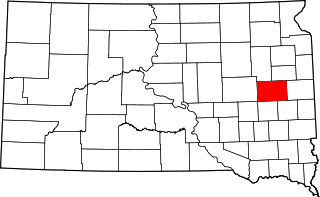There are 13 National Natural Landmarks in South Dakota.
| Name | Image | Date | Location | County | Ownership | Description |
|---|---|---|---|---|---|---|
| Ancient River Warren Channel | 1965 | Grant | mixed- state, private | A channel cut by the Ancient River Warren during the Ice Age. | ||
| Bear Butte |  | 1965 | 44°28′33″N103°25′37″W / 44.475833°N 103.426944°W | Meade | mixed- state, tribal, private | A cone-shaped mass of igneous rock standing alone 1,300 feet (400 m) above the surrounding plains. |
| Bijou Hills | 1976 | 43°31′04″N99°08′50″W / 43.517778°N 99.147222°W | Charles Mix | private | An excellent example of an erosional remnant of soft clays and shales capped by a channel sandstone and quartzite. | |
| Buffalo Slough | 1980 | 43°52′28″N96°56′20″W / 43.874308°N 96.939013°W | Lake | state | Excellent examples of a prairie pothole with native emergent vegetation, and a native bluestem prairie. | |
| The Castles | 1976 | 45°31′39″N103°10′15″W / 45.527583°N 103.170965°W | Harding | federal (Custer National Forest) | Steep-walled, flat-topped buttes standing 200 to 400 feet (61 to 122 m) above the surrounding prairie. | |
| Cathedral Spires and Limber Pine Natural Area |  | 1976 | 43°50′28″N103°32′40″W / 43.841111°N 103.544444°W | Custer | state (Custer State Park) | An excellent, rare example of joint-controlled weathering of granite. |
| Cottonwood Slough-Dry Run | 1975 | 44°57′25″N97°11′37″W / 44.957077°N 97.193497°W | Roberts | mixed- state, private | A completely undisturbed wetland complex including potholes, streams, shallow open water, lakes, and marsh. | |
| Fort Randall Eagle Roost | 1967 | 43°01′28″N98°37′27″W / 43.0244°N 98.6242°W | Gregory | federal (Missouri National Recreational River) | A prime winter roosting area for bald and golden eagles. | |
| Lake Thompson | 1975 | 44°17′06″N97°27′43″W / 44.285°N 97.461944°W | Kingsbury | state | Contains a large undisturbed and unmanipulated marsh, an outstanding waterfowl breeding and resting area. | |
| The Mammoth Site |  | 1980 | 43°25′29″N103°28′59″W / 43.42471°N 103.48313°W | Fall River | private | One of the largest concentrations of mammoth remains in the United States. |
| Red Lake | 1975 | 43°43′35″N99°13′31″W / 43.726352°N 99.22518°W | Brule | state | One of the largest remaining natural and unmanipulated prairie pothole lakes. | |
| Sica Hollow | 1967 | 45°44′31″N97°14′33″W / 45.741944°N 97.2425°W | Marshall | state | Displays many facets of natural history. | |
| Snake Butte | 1967 | Jackson | tribal (Oglala Sioux) | Illustrates one of two types of sand calcite deposits in the world. | ||
















